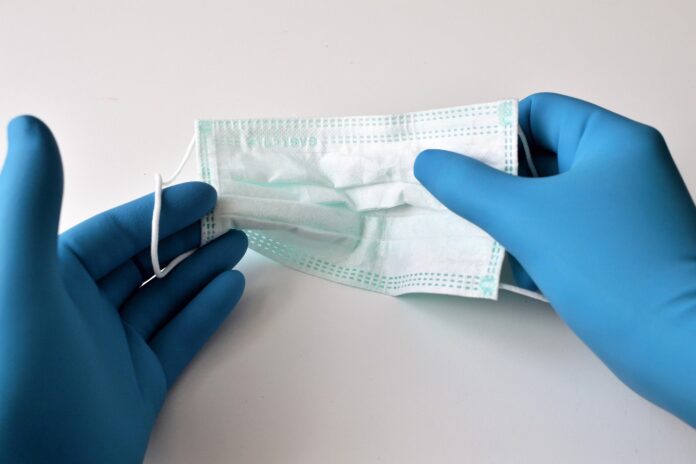A new experiment on the effectiveness of face masks for protection from the coronavirus has found that a properly fitted mask can stop large drops containing the virus for up to 99.9 percent. The findings are published in the journal Royal Society Open Science.
Water droplets that are released into the air through coughing, sneezing, or doing everyday activities like talking or singing is one of the major modes of transmission of the SARS-CoV-2 virus.
This is why the U.S. Centres for Disease Control and Prevention suggests wearing a face-covering in public spaces. Masks can stop the infected water droplets of the wearer as well as keep infected droplets from landing anywhere near the nose or mouth.
To test the efficacy of a mask in stopping droplets, the researchers used mechanical mannequins that released fluorescent droplets of water in the first part of the experiment.
In the second part, they also examined water droplets using human volunteers with and without masks while they coughed, sneezed, or took part in tasks such as talking. Both parts of the experiment included single-layer cotton masks and surgical masks.
Also Read: A Healthy Diet May Reduce Severity of Menopause Symptoms
By using UV light rays and laser sheet illuminations, the researchers were able to look at the transmitted droplets in situations with and without masks. In both parts of the experiment, wearing a mask reduced transmission of the virus significantly.
More precisely, the spread of the virus between humans and mannequins decreased by a 1000-fold. In addition, the researchers also found that masks are much more effective in reducing the risk of transmission than social distance.
According to the researchers, a maskless person standing two meters from an infected person who is coughing or sneezing has a 10,000 times higher risk of contracting the virus. In comparison, a person who is wearing a basic fabric mask and standing half a meter away.
These findings show the importance of wearing a mask in the prevention of coronavirus infection especially now when new strains of the virus have been found in different parts of the world.
Read the findings of the experiment here.
The reports on the new strains show that the virus may have become more contagious than before. Therefore, there is a general need to be more careful than before and for the implication of stricter policies for control of the virus.
While the results of the experiment can help in devising new coronavirus restrictions, it should be noted that there are limitations in its applications.
For instance, the experiment shows that masks can stop large water droplet containing the virus to a big extent but it does not look at smaller, aerosol particles. It is possible that aerosol droplets spread the virus even more than larger water droplets.
In such a case, only a combination of wearing a mask and social distancing can cut down the risk of contracting or spreading the virus. Therefore, it is better to take both preventive measures for maximum protection from the coronavirus infection.




